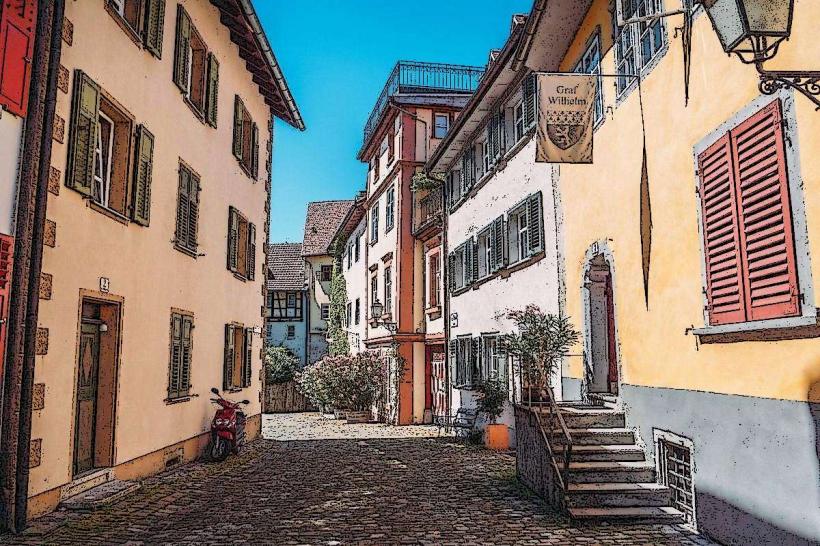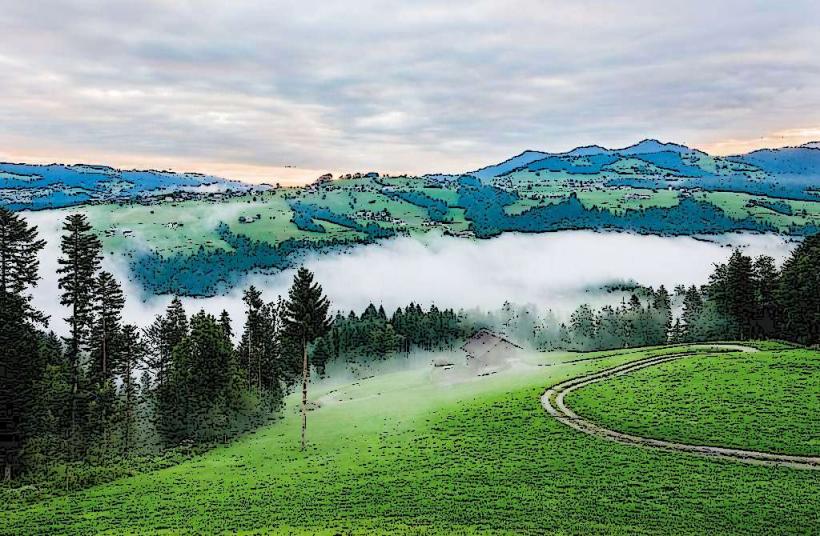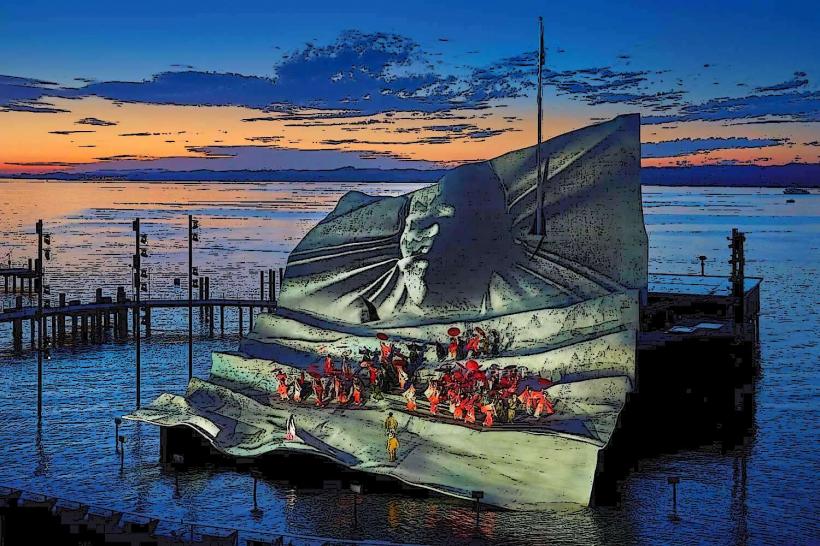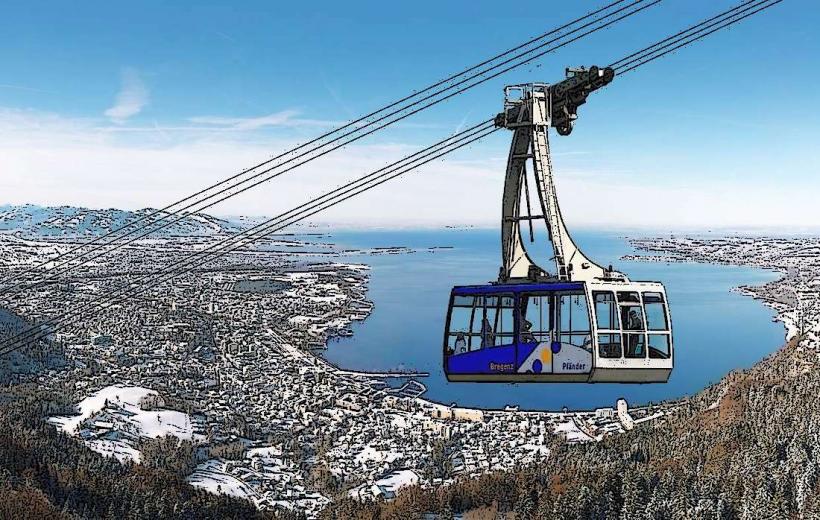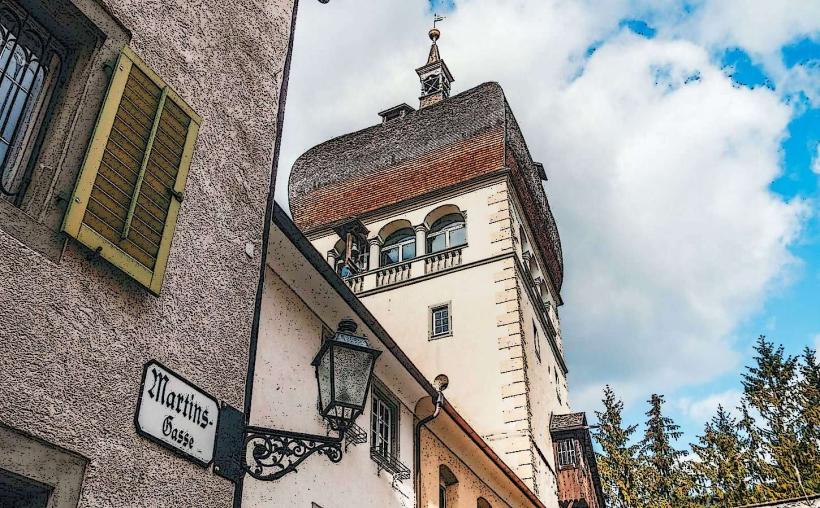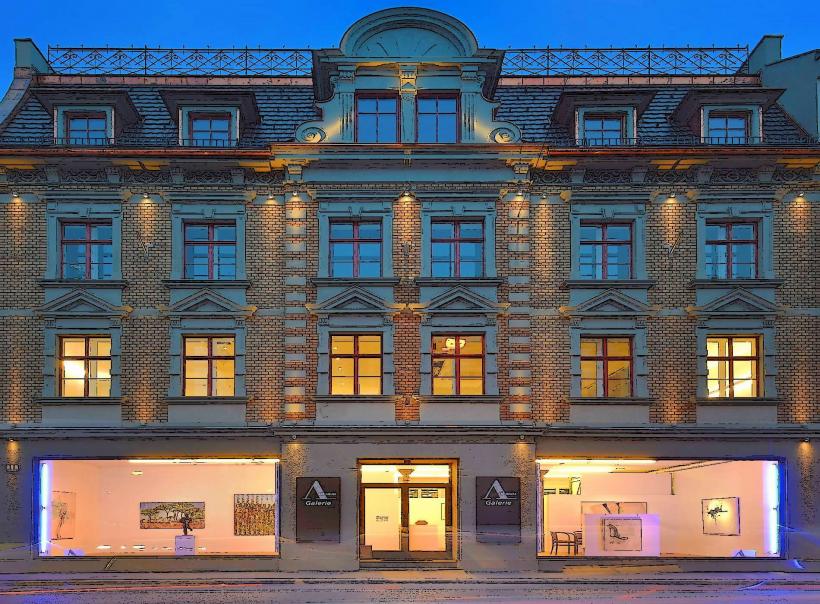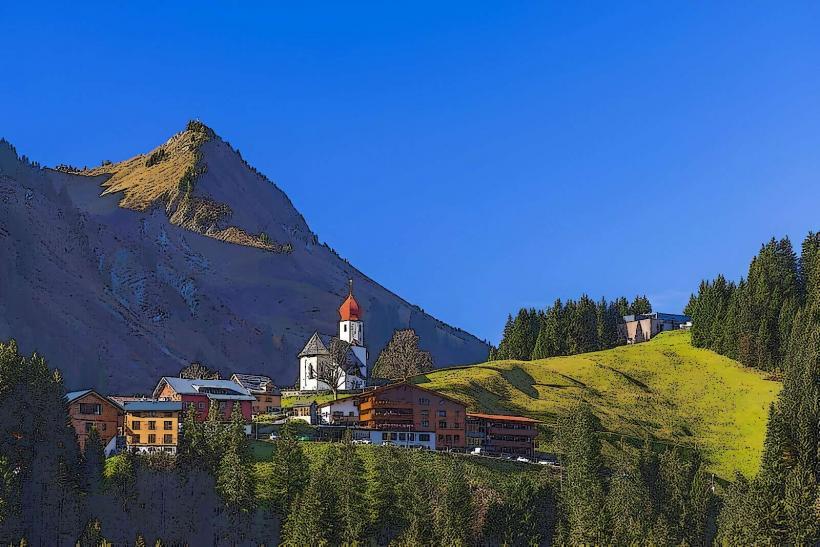Information
Landmark: Lake Constance (Bodensee)City: Bregenz
Country: Austria
Continent: Europe
Lake Constance (known as Bodensee in German) is a large, stunning freshwater lake located in central Europe, bordered by three countries: Austria, Germany, and Switzerland. It is one of the largest lakes in Europe and is famous for its natural beauty, vibrant communities, rich history, and a wide range of recreational activities.
Overview of Lake Constance (Bodensee)
1. Geography and Size
- Location: Lake Constance is situated in the Alps foothills, with the lake basin being surrounded by picturesque landscapes, including rolling hills, vineyards, and the distant snow-capped peaks of the Alps. It spans across three countries:
- Germany: The northern shores are predominantly German, including cities like Friedrichshafen and Konstanz.
- Switzerland: The western shore belongs to Switzerland, with towns such as Romanshorn and Arbon.
- Austria: The eastern part of the lake is in Austria, including cities like Bregenz and Lindau.
- Size:
- The lake covers an area of approximately 536 square kilometers (207 square miles).
- It stretches around 63 kilometers (39 miles) in length and has an average width of about 14 kilometers (8.7 miles).
- The maximum depth is about 254 meters (833 feet), making it one of Europe’s deepest lakes.
2. Water Quality and Environment
Water Source: The lake is primarily fed by the Rhine River, which enters from the eastern side of the lake near Kreuzlingen, Switzerland. It then continues its journey westward through the lake and out into the North Sea. The quality of the water in Lake Constance is generally very high, making it an ideal location for aquatic life and recreational activities.
Biodiversity: Lake Constance is home to a variety of aquatic species, including fish such as perch, pike, and whitefish. The surrounding ecosystems also support rich biodiversity, both in terms of plant life and wildlife. The lake's shoreline offers a mix of wetlands, beaches, and forests, supporting different habitats.
Environmental Protection: The lake is subject to strict environmental protections by the three bordering countries, ensuring its water quality is maintained for both ecological and recreational use. There are regular initiatives to protect the lake’s natural environment, including water management practices and conservation efforts.
3. Historical Significance
Ancient Settlements: Lake Constance has a rich history of human settlement dating back to prehistoric times. Evidence of early settlements can be found along the shores, including the famous pile dwellings, which are prehistoric homes built on stilts over the water. These sites are now recognized as UNESCO World Heritage Sites.
Roman Era: The Romans used Lake Constance as a natural route for transporting goods, and several Roman settlements existed on the lake’s shores. Konstanz, for instance, was an important Roman military outpost known as Constantia.
Medieval Importance: During the Middle Ages, the region around the lake became an important center for trade, and several cities around the lake became prosperous centers of commerce and culture. The Council of Constance (1414–1418), held in the town of Konstanz, was one of the most significant events in the history of the Catholic Church, as it ended the Western Schism and resolved disputes within the church.
Modern Era: Over the centuries, the region around Lake Constance has remained a crossroads of cultural, economic, and political activity. In the modern era, it has become a popular tourist destination due to its natural beauty and historical significance.
4. Tourism and Recreation
Lake Constance is a popular year-round destination for tourism, drawing visitors for its natural beauty, historic towns, and numerous outdoor activities.
Boating and Sailing: The lake is known for its clear waters, making it a perfect destination for boating and sailing. There are numerous opportunities for recreational sailing, as well as ferry services connecting the towns and cities around the lake. Visitors can take part in cruises to explore the lake’s different regions and islands.
Cycling and Hiking: The Lake Constance Cycle Path (Bodensee-Radweg) is one of the most popular cycling routes in Europe. The path runs for about 273 kilometers (170 miles) around the lake, offering cyclists an easy and scenic way to explore the area. There are also numerous hiking trails through the surrounding mountains and forests, providing beautiful views of the lake and the Alps.
Swimming: During the warmer months, the lake is a great spot for swimming and water sports. Several beaches and swimming areas are dotted along the shores, particularly in towns like Bregenz, Lindau, and Friedrichshafen.
Winter Sports: In winter, the nearby Alps provide ample opportunities for skiing, snowboarding, and winter hiking, making the region a great year-round destination.
5. Famous Towns and Attractions around Lake Constance
Konstanz (Germany): A charming university town with a well-preserved old town, medieval architecture, and the Konzilgebäude (Council Building) where the Council of Constance took place. The Mainau Island, known as the "Flower Island," is also a popular attraction near the city.
Bregenz (Austria): Known for the annual Bregenz Festival, an international opera festival staged on a floating stage on the lake. The Pfänder Mountain offers stunning panoramic views of the lake and the Alps.
Friedrichshafen (Germany): Famous for the Zeppelin Museum and Zeppelin flights, reflecting the city’s aviation history. The city also offers beautiful lakeside promenades and access to Mainau Island.
Lindau (Germany): A picturesque island town known for its historic center, lighthouse, and Bavarian Lion statue. It also offers scenic views of the Alps and is a popular place for strolls along the waterfront.
Romanshorn (Switzerland): A charming Swiss town known for its historic port and views of the lake. It is an excellent base for exploring the Swiss side of Lake Constance.
Mainau Island: Known for its stunning botanical gardens, Mainau is often referred to as the "Flower Island" due to its large collection of flowers and plants. The island also features a baroque palace and offers panoramic views of the lake.
6. Cross-border Collaboration
The three countries surrounding Lake Constance—Austria, Germany, and Switzerland—work together on issues related to environmental protection, transportation, and tourism. There are well-established regional networks for transportation, including ferry services and bike paths, which cross the borders and make it easy to explore the entire region.
The three countries have a shared commitment to preserving the lake’s natural beauty, ensuring that it remains an ecological and recreational gem for future generations.
Conclusion
Lake Constance (Bodensee) is one of Europe's most beautiful and culturally rich lakes. It offers visitors a unique combination of natural landscapes, historical sites, and recreational opportunities. Whether you’re interested in hiking, cycling, sailing, or simply enjoying the scenery, the area around Lake Constance provides a wealth of experiences for travelers of all interests. The diverse mix of German, Austrian, and Swiss cultures makes it a fascinating destination, while its pristine environment ensures that it remains a top spot for nature lovers and adventurers alike.

